When ice shelves collapse, sea level can rise. But by how much?
19 July 2018
Ice shelves are floating platforms of thick ice that exist in Antarctica, at the southernmost part of our planet, as well as near the north pole. Ice shelves are already floating in the ocean, so melting of an ice shelf cannot directly cause sea-level rise. This is explained by Archimedes’ Law. However, most ice shelves are fed by glaciers on land. Glaciers are slow-moving rivers of ice that flow onto the ice shelves. Ice shelves help to control the speed and stability of these glaciers by holding them back. If the ice shelves collapse or break apart, these glaciers would flow into the ocean, dumping ice into it and raising the sea level as a result. You could compare this to shaking a bottle of fizzy drink and then taking off the cap (=the ice shelf): the fizzy drink (=the glacier) will start to flow out of the bottle. In this way, melting of ice shelves can indirectly cause sea-level rise. The Antarctic Peninsula, the northernmost part of Antarctica, has been warming rapidly in recent years. This has put some of the peninsula’s ice shelves – including two called Larsen C and George VI – at risk of collapse. In a new study published in the EGU journal The Cryosphere, an international team of scientists calculated how much sea-level rise would result from the collapse of these two ice shelves. The scientists think that the increased flow into the ocean of the glaciers that feed George VI, which is much smaller than Larsen C, would contribute five times more to global mean sea-level rise. A collapse of Larsen C, from which a trillion-tonne iceberg broke away in summer 2017, would lead to 4 mm of sea-level rise by 2300, while the break-up of George VI would make sea levels rise by 22 mm. These numbers may seem small, but this would be the sea-level rise from the collapse of only two ice shelves. There are many other sources that would add to global sea-level rise, such as other glaciers that flow into the sea, melting in Greenland and the East and West Antarctica ice sheets, and from ocean water warming up because of climate change. Nick Barrand, a scientist at the University of Birmingham in the UK who was involved in the study said: “Taken together with these other sources of sea-level rise, the impacts could be significant to island nations and coastal populations.”Find out more
Discuss with your teacher or parents
What’s the difference between ice sheets and ice shelves?
What is a glacier?
Why is sea level rising?
What can we do to help reduce the impacts of sea-level rise?
What is Archimedes’ Law?
Print version
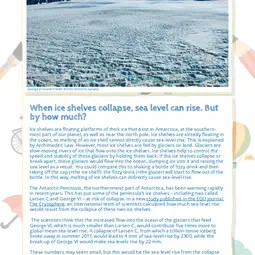
This is a kids' version of the EGU article: 'When ice shelves collapse, sea level can rise. But by how much?'. It was written by Bárbara Ferreira (EGU Media and Communications Manager), reviewed for scientific content by Aimée Slangen (Researcher at Royal NIOZ, Yerseke, The Netherlands) and Louise Callard (Researcher in the Department of Geography, Durham University, UK), and for educational content by Rachel Hay (Geography Teacher, George Heriot’s School, Edinburgh).
Translations
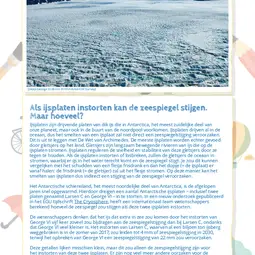
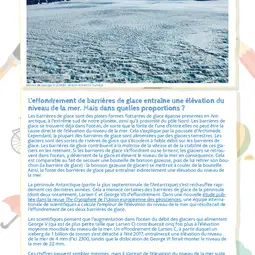
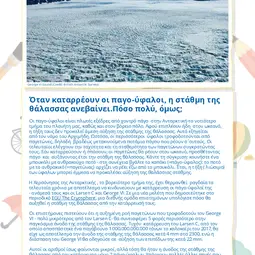
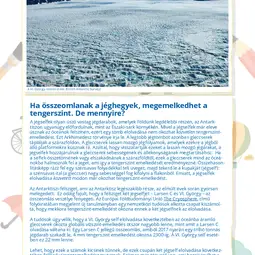
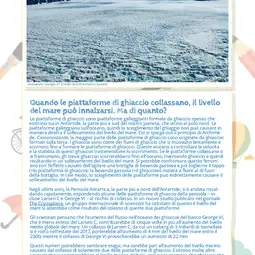
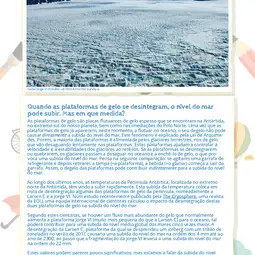
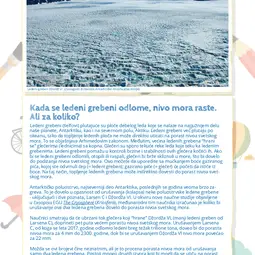
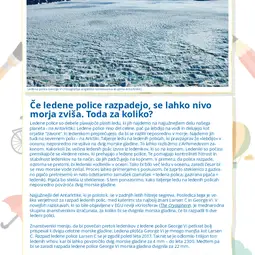
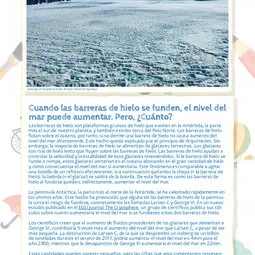
All English-language Planet Press releases are carefully edited, reviewed and proofed, by scientists, educators and EGU staff. Please note that once translated, Planet Press releases receive no further checks from EGU staff. For this reason, we cannot guarantee their accuracy, though we trust the quality of our voluntary translators and are grateful for their work.

